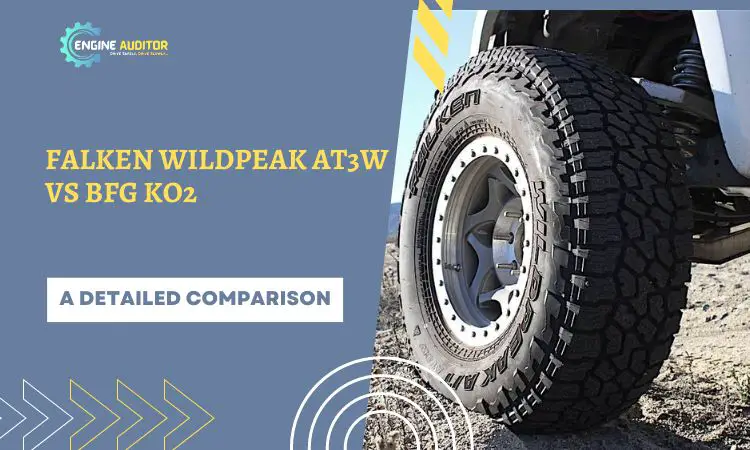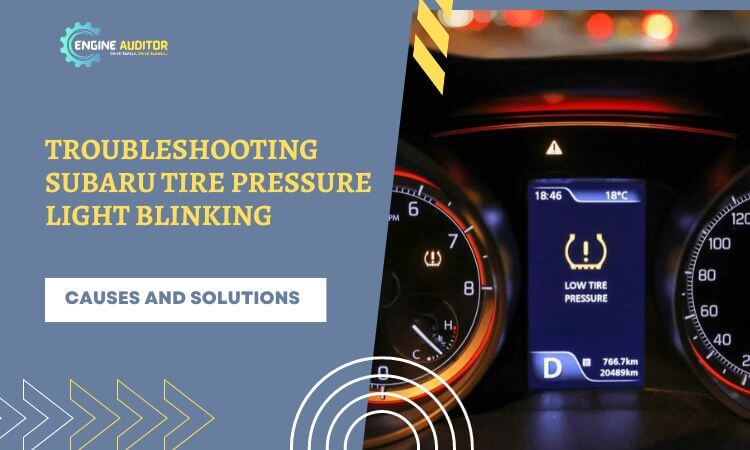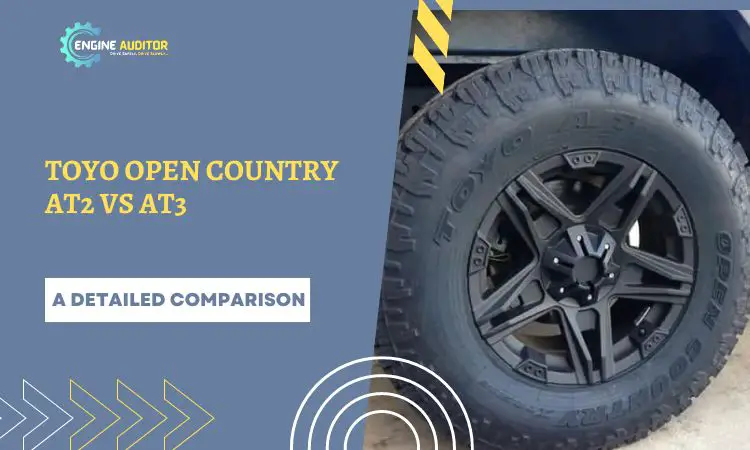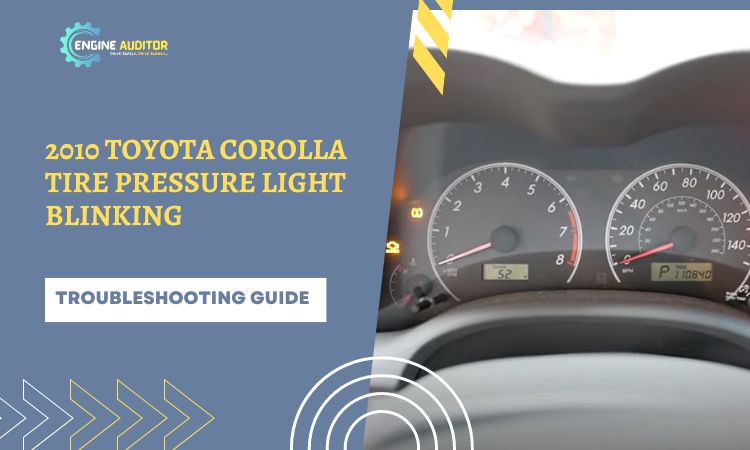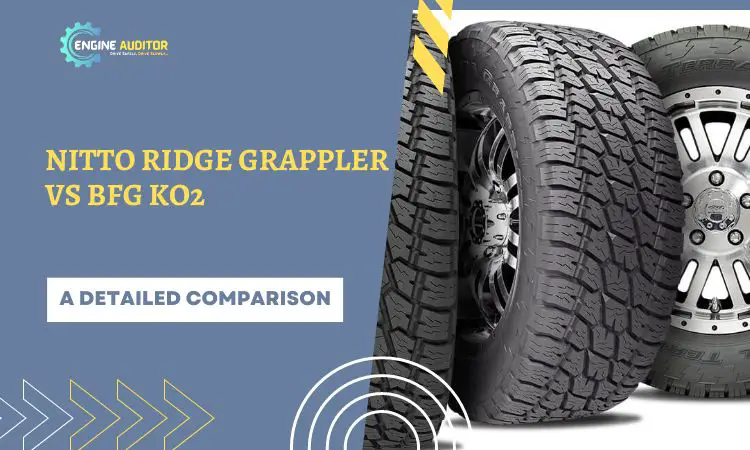Hey there! This post contains affiliate links to products. We may receive a commission for purchases made through these links. But it never influences our product selection process.
Nissan cars are renowned for their exceptional performance and reliability. However, encountering a blinking tire pressure light can cause concern. This issue often signifies an imbalance or low tire pressure, which can compromise safety, fuel efficiency, and tire longevity. Addressing and fixing the blinking light issues of Nissan tires ensures optimal driving conditions, reduces the risk of tire damage, and maintains overall vehicle performance. But how to do that?
You can fix the tire pressure blinking light by adjusting tire pressure, replacing sensors, and addressing temperature fluctuations. Also, repairing leaks or replacing batteries could be an effective way to fix the problem. However, you need to be careful to identify the cause and then fix it accordingly.
Let’s explore the causes and solutions for troubleshooting the Nissan tire pressure light blinking.
Why Is My Tire Pressure Light Blinking?
Tire pressure lights can blink due to many reasons. However, the 5 most common causes of the tire pressure light blinking are listed below.
- Low or high tire pressure
- Faulty tire pressure sensor
- Rapid changes in temperature
- Tire puncture or leakage
- Dead tire pressure Sensor battery
You may also like: Uncover the Key Differences: 8 Ply vs 10 Ply Tires – Which is Right for You?
How To Troubleshoot Nissan Tire Pressure Light Blinking: Problems & Solutions
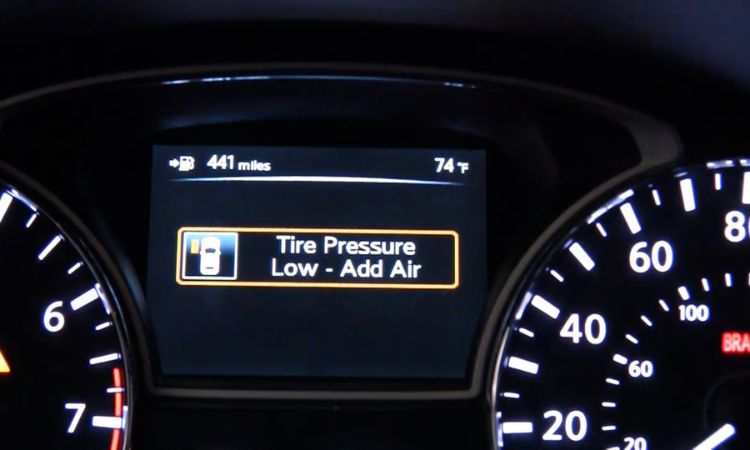
Problem 1: Low or High Tire Pressure
If you have lower or higher tire pressure than the recommended level, you may experience a tire pressure blinking light. Such abnormal pressure can affect the overall vehicle performance, tire lifespan, and fuel efficiency.
Solution:
- First, check the recommended pressure for your vehicle’s tires in the owner’s manual or on the driver’s side door jamb.
- Then, take a tire pressure gauge and measure the pressure of each tire.
- Inflate or deflate the tires depending on the available tire pressure as needed to reach the recommended tire pressure.
- After adjusting the pressure, recheck the tire pressure with the gauge.
- Then check for the blinking light, and ensure the light has stopped blinking.
Problem 2: Faulty Tire Pressure Sensor
A faulty tire pressure sensor can cause the tire pressure light to blink. The reason is that it may provide inaccurate readings or fail to transmit the data. If it happens to you, it will alert the TPMS for the issue. You will need to replace the tire pressure sensor to stop the light from blinking.
Solution:
- Start with checking all tire pressures manually with a gauge.
- Inflate or deflate the tires as needed to match the recommended tire pressure level.
- Switch off your vehicle and back on to see if the light resets.
- If the light continues blinking, Check for the tire pressure sensor.
- If the tire pressure sensor is faulty, replace it with a Dorman 974-001 Tire Pressure Monitoring System Sensor.
- Once the sensor is replaced, make sure it is connected properly.
- Taking a test drive before returning to the road is good.
You may also like: Exploring Strength and Durability: Comparing Mickey Thompson Baja Boss at vs. bfg ko2
Problem 3: Rapid Changes in Temperature
You may not consider it, but rapid temperature changes can cause the tire pressure light to blink. Because temperature fluctuations can affect tire pressure. As the temperature increases or decreases quickly, the air inside the tires expands or contracts. It may lead to a change in tire pressure that may trigger the TPMS, and the light may start blinking.
Solution:
- Start with checking the tire pressure; it should be up to the recommended level.
- If the tire pressure is significantly lower or higher than the recommended range, adjust it accordingly using an air compressor or let out air if needed.
- Also, Inspect the tires for damages, such as cuts, bulges, or punctures. If there you find to repair them otherwise, replace the damaged tires. I recommend TOYO Open Country RT All- Season Radial Tire. It is an affordable and reliable tire for cars.
- If the tire pressure is within the correct range and there are no visible tire issues. The blinking light may be due to rapid temperature changes. This can occur during seasonal transitions or sudden weather changes.
- Wait for at least 30 minutes to allow the tires to cool down if they have recently been driven. Rapid temperature changes can cause the tire pressure to fluctuate temporarily.
- Before starting, you journey back first check and ensure the pressure is up to recommended level and the light is not blinking.
Problem 4: Tire Puncture or Leakage

Tire puncture or leakage is a common cause for the tire pressure light to blink. It detects a drop in air pressure that indicates a potential problem with the tire.
Solution:
- Start with visually inspecting the tires for any obvious punctures or nails.
- Inflate the tires to the recommended pressure level.
- Then, apply soapy water to the tire’s surface and check for bubbles to identify the leak.
- If a leak is found, mark the location and remove the tire.
- Repair the puncture using a tire repair kit.
- Reinstall the tire and check for proper inflation.
- Reset the tire pressure monitoring system if necessary
- Take a test ride and make sure the light is off
Problem 5: Dead Tire Pressure Sensor Battery
A dead tire pressure sensor causes the tire pressure light to blink. If it happens, it fails to transmit any data about tire pressure. The system cannot get the signals from the sensor, and ultimately you experience a light start blinking.
Solution:
- First, Locate the TPMS reset button or switch inside the vehicle.
- Then, push the reset button and keep it for five seconds until the light blinks twice.
- Check each tire’s tire pressure using a gauge and inflate or deflate as needed.
- If the light still continues to blink. It indicates a dead sensor battery.
- Check for the battery by connecting it to the multimeter. I recommend the Extech EX350 True RMS Professional MultiMeter. It is easy to operate.
- Check the voltage; it should be 12 V; if it is low, recharge it.
- If the problems still exist, replace the battery.
Why Does The Tire Pressure Light Blinking Then Stays On?
The tire pressure light blinks and then stays on, indicating that you have an issue with the tire pressure monitoring system. It can happen for several reasons, such as low tire pressure, a faulty sensor, or a problem with the TPMS itself.
However, It is essential to address it promptly. Improper tire pressure can affect handling, fuel efficiency, and tire wear. Check the tire pressure using a gauge and inflate or deflate the tires as needed.
Nissan Tire Pressure Sensor Reset
Resetting a tire pressure sensor is a simple task that may take 2 to 3 minutes to complete.
- First, check and ensure all tires are properly inflated according to the recommended pressure.
- Switch on the engine and locate the tire pressure monitoring system (TPMS) button, usually located below the steering wheel.
- Once found, press it and hold it until the TPMS indicator light blinks twice.
- Then release the reset button and wait 3 to 5 minutes until the TPMS light stops blinking. Once done, you have reset it.
When To Seek Professional Help?
You should seek professional help for a blinking Nissan tire pressure light if the issue persists after adequately inflating the tires, checking for any visible damage or punctures, and ensuring the spare tire is not in use.
Additionally, if the light blinks constantly or is accompanied by other warning signs (such as abnormal tire wear or handling issues) it is advisable to consult a professional. Timely intervention can prevent potential tire damage, ensure optimal vehicle performance, and maintain safety on the road.
Frequently Asked Questions (FAQs):
Is it possible to drive with a blinking tire pressure light?
Driving with a blinking tire pressure light is not good. It usually indicates a severe problem with your tires, such as low pressure or a puncture. Continuing to drive can lead to tire damage or a potential safety hazard. So, it is better to quickly resolve the problem.
Why is the Nissan Altima 2010 tire pressure light blinking?
The blinking tire pressure light on a 2010 Nissan Altima typically indicates a problem with the tire pressure monitoring system. It can happen due to faulty sensors, low tire pressure, or other potential issues.
How much is it to fix the tire pressure light that is blinking?
The cost to fix a blinking tire pressure light depends on the cause of the issue and the required repairs. It can be between 5 dollars 500 dollars depending on the severity of the issue.
What is a good tire pressure for Nissan?
The recommended tire pressure for a Nissan vehicle is between the range of 30-35 psi (pounds per square inch). However, it is better to consult the user manual to keep your car tire pressure at the correct level.
Conclusion
A blinking tire pressure light can be caused by various factors. By following the proper techniques and identifying problems, you can quickly solve them. While starting troubleshooting, make sure you have the skills to do it. Otherwise, call for professional services to get rid of the problem.

